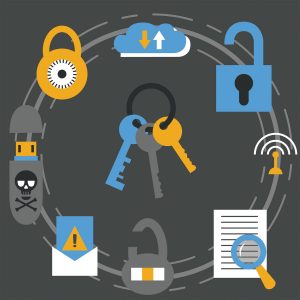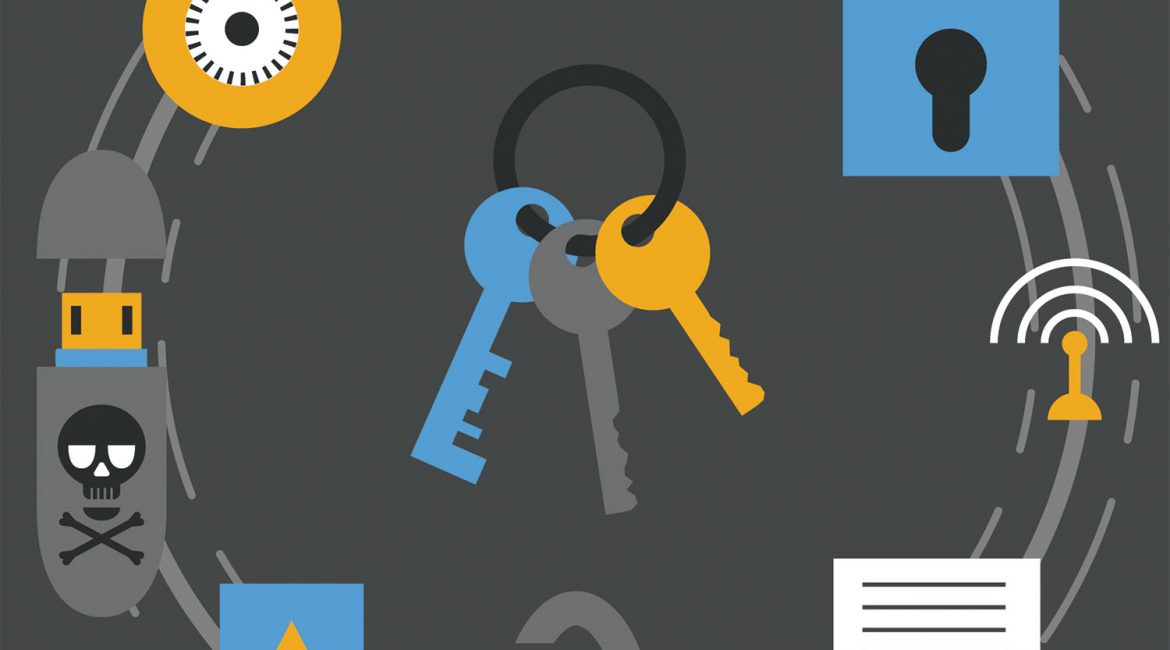 Going into 2023, cybersecurity is still topping the list of CIO concerns. This comes as no surprise. In the first half of 2022, there were 2.8 billion worldwide malware attacks and 236.1 million ransomware attacks. By year end 2022, it is expected that six billion phishing attacks will have been launched.
Going into 2023, cybersecurity is still topping the list of CIO concerns. This comes as no surprise. In the first half of 2022, there were 2.8 billion worldwide malware attacks and 236.1 million ransomware attacks. By year end 2022, it is expected that six billion phishing attacks will have been launched.
In a new survey from IEEE polling 350 chief technology officers, chief information officers and IT directors, 51% of respondents mentioned cloud vulnerability as a top concern (up from 35% in 2022) and 43% mentioned data center vulnerability as a top concern (up from 27% in 2022).
Other areas of concern for cybersecurity professionals include:
- Ransomware attacks (30%)
- Coordinated attacks on an organization’s network (30%)
- Lack of investment in security solutions (26%)
Here are 10 top security threats that IT is likely to see in 2023.
Top 10 security threats for next year
1. Malware
Malware is malicious software, including viruses and worms, injected into networks and systems with the intention of causing disruption. Malware can extract confidential information, deny service and gain access to systems.
IT departments use antivirus software and firewalls to monitor and intercept malware before it gains entry to networks and systems, but bad actors continue to evolve their malware to elude these defenses. That makes maintaining current updates to security software and firewalls essential. There are also hardware solutions for thwarting malware, such as Gryphon’s Guardian mesh router, which handles a variety of threats.
2. Ransomware
Ransomware is a type of malware. It blocks access to a system or threatens to publish proprietary information. Ransomware perpetrators demand that their victims’ companies pay them cash ransoms to unlock systems or return information.
So far in 2022, ransomware attacks on companies are 33% higher than they were in 2021. Many companies agree to pay ransoms to get their systems back only to be hit again by the same ransomware perpetrators.
3. Supply chain vulnerabilities
Supply chain hacks, which include the infamous SolarWinds attack that found its way to several government agencies and perhaps lesser known exploits involving JS.node vulnerabilities, are especially pernicious because the size of the threat surface is basically wherever tainted software goes.
In the case of SolarWinds’ Orion update, that surface included hundreds of consulting, technology, telecom and extractive entities in North America, Europe, Asia and the Middle East. One step companies can take is to audit the security measures that their suppliers and vendors use to ensure that the end-to-end supply chain is secure.
Justin Cappos, a professor of computer science at NYU who created the open-source security protocol called in-toto, explained that people typically rely SBOM (software bill of materials) to “know” what’s in their software supply chain.
“These are a little like nutrition labels on food,” he explained. “If you can’t attest to the accuracy of these labels, you have a problem. That’s where things like in-toto come in: You create essentially signed statements, or attestations, that certain people, and only those people, took legitimate actions like checking code or doing things with dependencies.”
4. Phishing
Software can do only so much to defend against social engineering. Almost everyone has received a suspicious email — or worse yet, an email that appears to be legitimate and from a trusted party but isn’t. This email trickery is known as phishing.
Phishing is a major threat to companies because it’s easy for unsuspecting employees to open bogus emails and unleash viruses. Employee training on how to recognize phony emails, report them and never open them can really help. IT should team with HR to ensure that sound email habits are taught.
There are many vendors who offer training and packaged solutions for companies looking for something approaching a turnkey solution. There are also tech solutions. Password managers are a critical first line of defense.
5. IoT
In 2020, 61% of companies were using IoT, and this percentage only continues to increase. With the expansion of IoT, security risks also grow, particularly with the advent of 5G telecommunications, the de facto communications network for connected devices.
IoT vendors are notorious for implementing little to no security on their devices, a threat that can be ameliorated through stronger vetting of IoT vendors upfront in the RFP process for security and by resetting IoT security defaults on devices so they conform to corporate standards. IoT devices generally contain simple-to-guess credentials, or their default passwords are readily available on the internet. Following simple cybersecurity best practices, such as changing passwords after installation, will make it much more difficult for compromise by bad actors.
6. Internal employees
Disgruntled employees can sabotage networks or make off with intellectual property and proprietary information, and employees who practice poor security habits can inadvertently share passwords and leave equipment unprotected. This is why there has been an uptick in the number of companies that use social engineering audits to check how well employee security policies and procedures are working.
In 2023, social engineering audits will continue to be used so IT can check the robustness of its workforce security policies and practices.
7. Data poisoning
An IBM 2022 study found that 35% of companies were using AI in their business and 42% were exploring it. Artificial intelligence is going to open up new possibilities for companies in every industry. Unfortunately, the bad actors know this too.
One need look no further than the Log4J Log4Shell bug for proof that data poisoning in AI systems is ascendant. In a data poisoning, a malicious actor finds a way to inject corrupted data into an AI system that will skew the results of an AI inquiry, potentially returning an AI result to company decision makers that is false.
Data poisoning is a new attack vector into corporate systems. One way to protect against it is to continuously monitor your AI results. If you suddenly see a system trending significantly away from what it has revealed in the past, it’s time to look at the integrity of the data.
8. New technology
Organizations are adopting new technology like biometrics. These technologies yield enormous benefits, but they also introduce new security risks since IT has limited experience with them. One step IT can take is to carefully vet each new technology and its vendors before signing a purchase agreement. A major benefit is that some biometrics are immutable, unlike passwords.
9. Multi-layer security
How much security is enough? If you’ve firewalled your network, installed security monitoring and interception software, secured your servers, issued multi-factor identification sign-ons to employees and implemented data encryption, but you forgot to lock physical facilities containing servers or to install the latest security updates on smartphones, are you covered?
There are many layers of security that IT must batten down and monitor. IT can tighten up security by creating a checklist for every security breach point in a workflow.
10. Cloud security
Yes, the 2019 data breach by a Seattle hacker resulted in the theft of some 100 million credit applications, but the exfiltration of a misconfigured AWS storage bucket in the cloud led to something else — regulatory headaches for the company. Potential fines from the regulatory oversight of containers is, paradoxically, one of the major cyber challenges experts are pointing to for 2023. When it comes to corporate reputation and pocketbook, the blowback could be as bad as the break-in.
In the above case, a federal court found Capital One negligent for failing to secure financial data. That came with an $80 million fine, plus customer lawsuits for $190 million.
For more information on solutions for running your businesses’ technology more efficiently, visit our website or contact Megan Meisner at mmeisner@launchpadonline.com or 813 448-7100 x210.
This was originally posted by TechReplublic.

